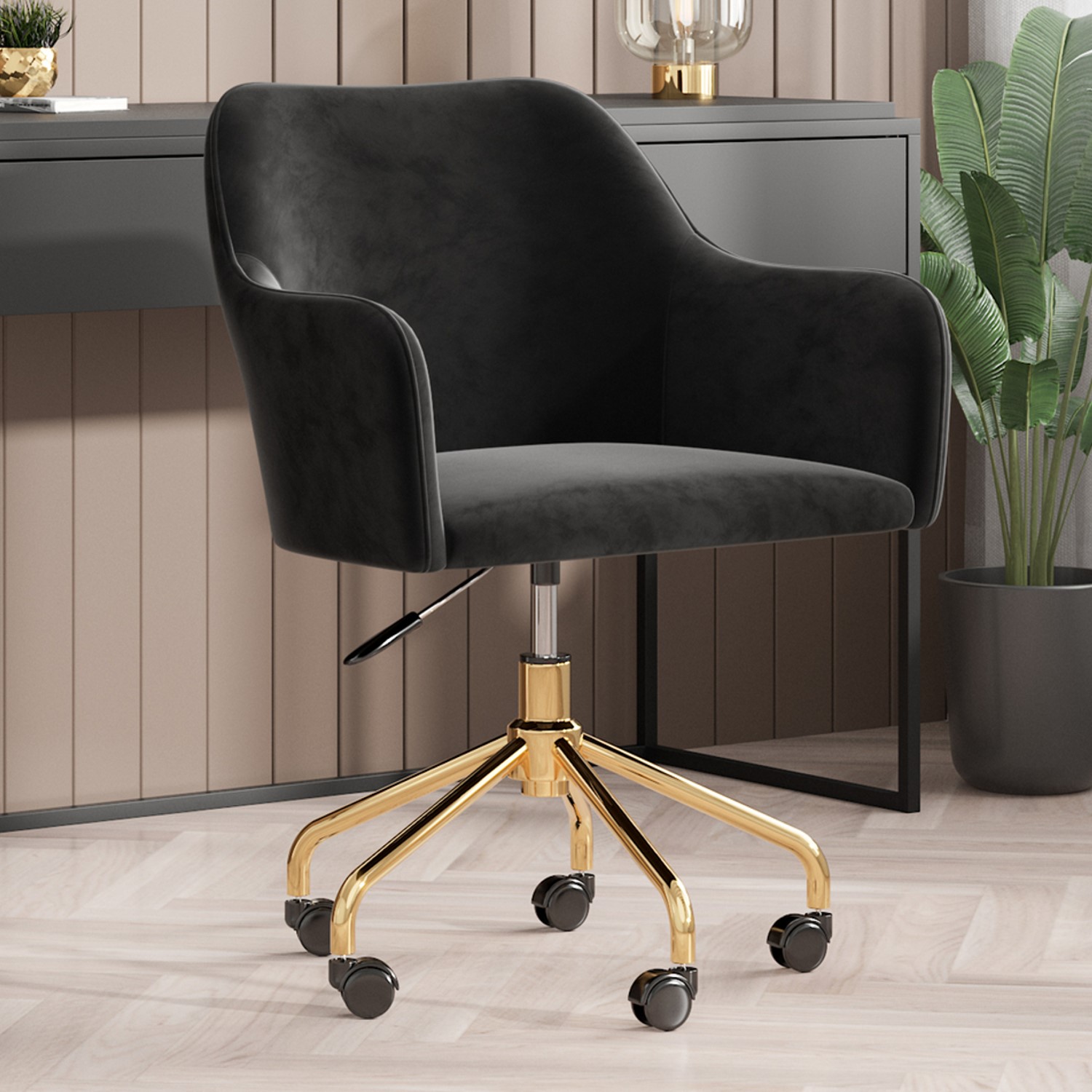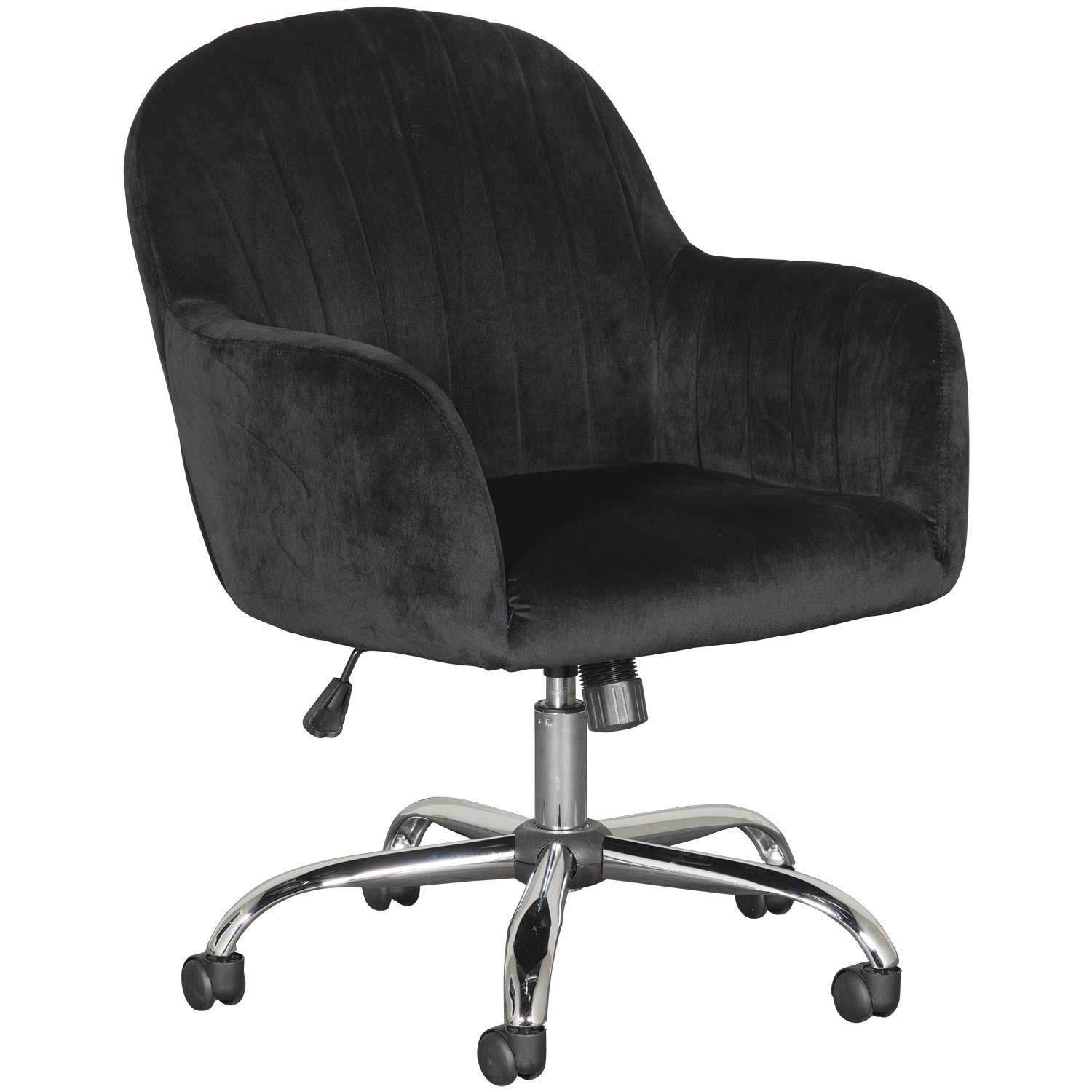Product Overview

Sink into a world of refined comfort and sophisticated style with the black velvet office chair. More than just seating, it’s a statement piece, a testament to the elegance that can be woven into even the most utilitarian of spaces. The deep, plush velvet exudes luxury, transforming a workspace into a sanctuary of calm amidst the day’s demands.
The allure of the black velvet office chair lies in its ability to effortlessly blend with a variety of aesthetic preferences. Its versatility is its strength, capable of anchoring a modern minimalist design or adding a touch of dramatic flair to a more traditional setting. The rich, dark hue provides a grounding presence, a quiet counterpoint to the vibrancy of surrounding décor.
Styles of Black Velvet Office Chairs
Black velvet office chairs transcend simple functionality, manifesting in diverse styles that cater to a wide range of tastes and ergonomic needs. Modern designs often feature clean lines, minimalist silhouettes, and perhaps a chrome or sleek metal base, emphasizing a contemporary aesthetic. In contrast, traditional styles might incorporate ornate detailing, perhaps carved wooden legs, and a more substantial, upholstered frame, evoking a sense of classic elegance. Ergonomic chairs, regardless of their overall style, prioritize comfort and support through features like adjustable lumbar support, headrests, and breathable mesh backing, ensuring prolonged sitting doesn’t compromise posture or well-being. The choice depends entirely on personal preference and the overall design of the workspace.
Materials Used in Construction
Beyond the luxurious velvet upholstery, the construction of a black velvet office chair involves a careful selection of materials that contribute to its durability, aesthetic appeal, and overall cost. The base, for example, might be crafted from sturdy wood, providing a classic and often more expensive feel, or from durable metal for a more modern and potentially less expensive option. Plastic bases offer a budget-friendly alternative, though they may not possess the same level of perceived quality or longevity.
| Material | Durability | Cost | Aesthetic Impact |
|---|---|---|---|
| Wood (e.g., Oak, Walnut) | High; naturally strong and long-lasting | High; premium wood increases cost | Classic, sophisticated, luxurious |
| Metal (e.g., Steel, Chrome) | High; resistant to wear and tear | Medium; varies based on metal type and finish | Modern, sleek, industrial or elegant (depending on finish) |
| Plastic | Medium; susceptible to scratches and breakage | Low; generally the most affordable option | Contemporary, minimalist; can appear less luxurious |
Market & Design Trends: Black Velvet Office Chair

The allure of velvet, a fabric historically associated with luxury and opulence, has seeped into the contemporary office landscape, transforming the humble office chair into a statement piece. This shift reflects a broader trend towards blending comfort, style, and ergonomic functionality in workspace design. The integration of velvet into office chairs represents a fascinating intersection of traditional elegance and modern practicality.
Velvet’s resurgence in office chair design is driven by several factors, including a growing desire for personalized and aesthetically pleasing workspaces. The tactile softness of velvet offers a welcome contrast to the often-sterile environment of a typical office, fostering a sense of comfort and sophistication. This trend extends beyond simple aesthetic appeal; it reflects a deeper cultural shift towards prioritizing well-being and creating environments that enhance productivity and mood.
Velvet Office Chair Pricing Across Brands and Retailers, Black velvet office chair
Price points for black velvet office chairs vary significantly depending on brand reputation, material quality, construction techniques, and retailer markup. High-end brands, known for their commitment to premium materials and meticulous craftsmanship, command higher prices, often exceeding $500. These chairs typically feature robust frames, ergonomic adjustments, and superior velvet fabrics that are durable and easy to clean. Conversely, budget-friendly options from mass-market retailers might range from $100 to $300, offering a more affordable entry point into the velvet office chair market, though often compromising on features and material quality. Mid-range brands occupy a sweet spot, balancing quality and affordability, typically pricing their black velvet office chairs between $300 and $500. These prices reflect a spectrum of choices, catering to diverse budgets and preferences.
Hypothetical Design Process: A Black Velvet Office Chair
The creation of a new black velvet office chair would involve a multifaceted design process, carefully balancing aesthetics, ergonomics, and practicality.
Phase 1: Conceptualization and Mood Board
The initial phase would focus on establishing the chair’s overall aesthetic. This involves creating a mood board showcasing inspiration images, color palettes, and material samples. The desired mood – perhaps sophisticated minimalism or luxurious comfort – would guide the selection of velvet type (a plush, deep pile versus a subtly textured short pile), base material (polished aluminum for a modern feel, or dark wood for a more traditional look), and overall silhouette. Sketching various design iterations would be crucial to refine the form and proportions.
Phase 2: Material Selection and Prototyping
This phase centers on selecting the specific velvet fabric, considering factors like durability, stain resistance, and color consistency. Samples would be rigorously tested for wear and tear, and colorfastness. The base material – be it metal, wood, or plastic – would be chosen based on its strength, aesthetic appeal, and cost-effectiveness. Initial prototypes would be constructed using these chosen materials to evaluate comfort, adjustability, and overall structural integrity. Ergonomic considerations, such as lumbar support and seat depth, would be meticulously tested and refined.
Phase 3: Refinement and Production
Based on feedback from the prototyping phase, adjustments would be made to the design. This might involve altering the angle of the backrest, refining the curvature of the seat, or making subtle changes to the base design. Once the design is finalized, detailed manufacturing specifications would be created, and the chair would enter the production phase. Quality control checks at each stage of production would ensure consistency and adherence to the design specifications.
